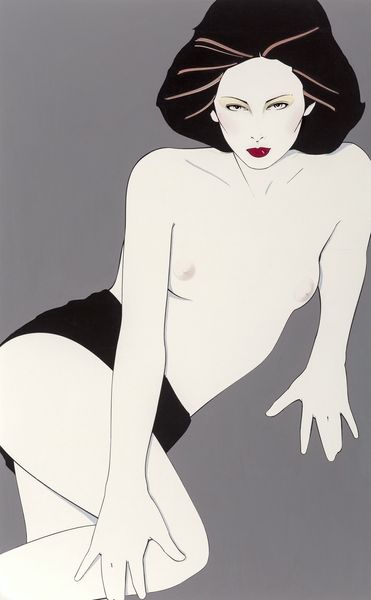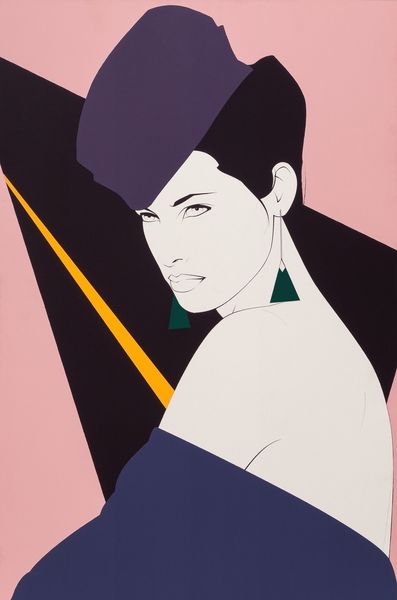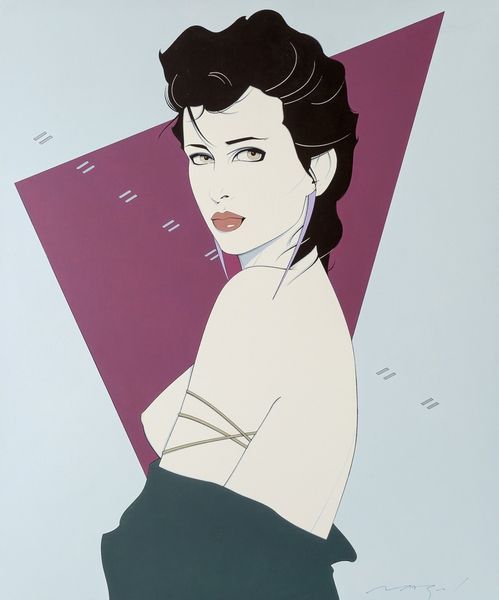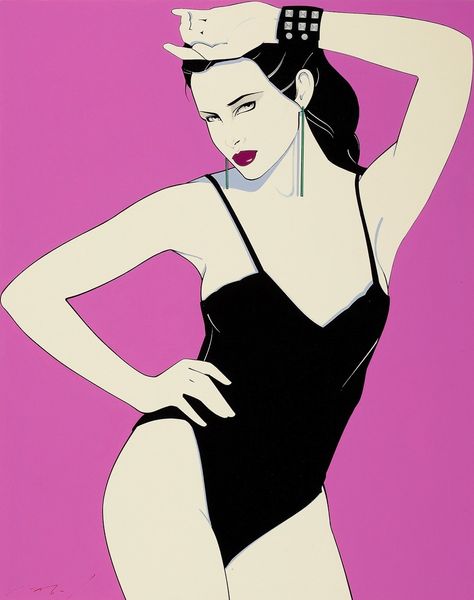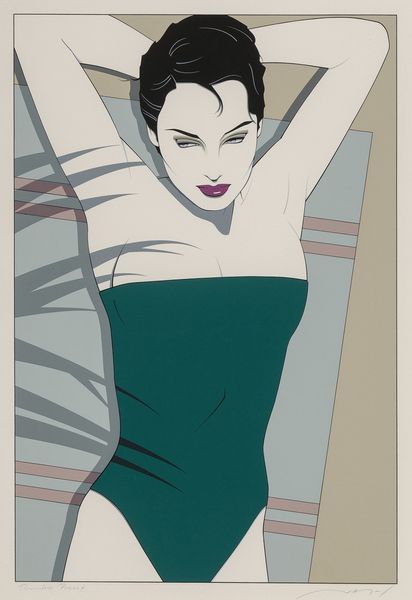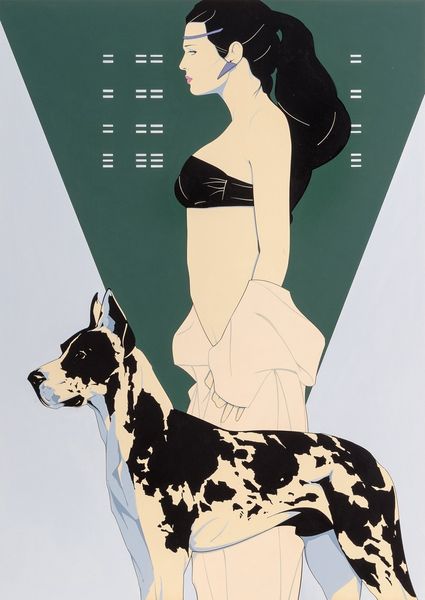
Copyright: Modern Artists: Artvee
Editor: So, here we have Patrick Nagel’s "Covering Up," from 1983, rendered in acrylic paint and drawing. The smooth lines and flat planes against that stark pink background—it almost feels like an advertisement, but for what? What do you see in this piece from your perspective? Curator: It's fascinating how Nagel elevates what appears to be a commercial aesthetic through material choices and the construction of the image. Think about the labor involved in achieving that hyper-refined, airbrushed finish with acrylics in the 80s. It reflects a particular kind of production, a moment defined by the rise of consumerism. The seemingly simple line work isn't simple at all; it is carefully considered to evoke the aspirational imagery prevalent at the time. Does it succeed, or does the minimalism question the very industry it appears to embrace? Editor: That's an interesting point – the tension between celebrating and critiquing consumerism. The materials themselves, acrylic and possibly even the drawing media – weren't they seen as a little "low brow" compared to oils, especially at that time? Curator: Precisely! Nagel's choice flies in the face of traditional hierarchies of artistic materials. He's using industrial materials – acrylics developed for commercial purposes – and applying them to create what one might consider ‘fine art.’ It questions those established divisions between art and craft, and it emphasizes the impact of mass production on our visual culture. How much does the context alter our viewing of this piece today? Editor: I never really considered how the *means* of production plays such a huge role in dictating reception. Today we can appreciate a lot more the implications of mass productions... I'll definitely think of pop art differently going forward! Curator: Indeed. Focusing on those material aspects can open up surprising insights into not only art history but broader cultural trends as well.
Comments
No comments
Be the first to comment and join the conversation on the ultimate creative platform.

